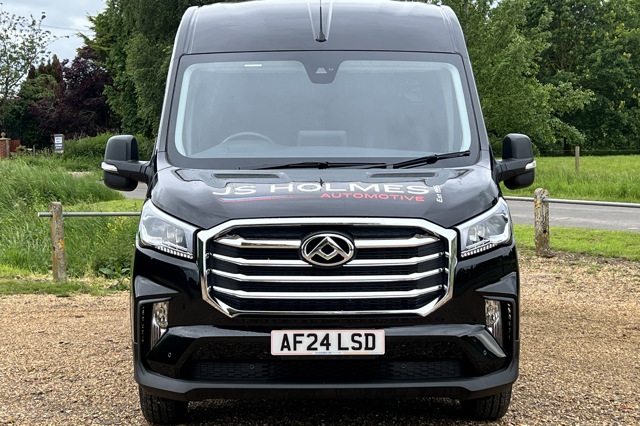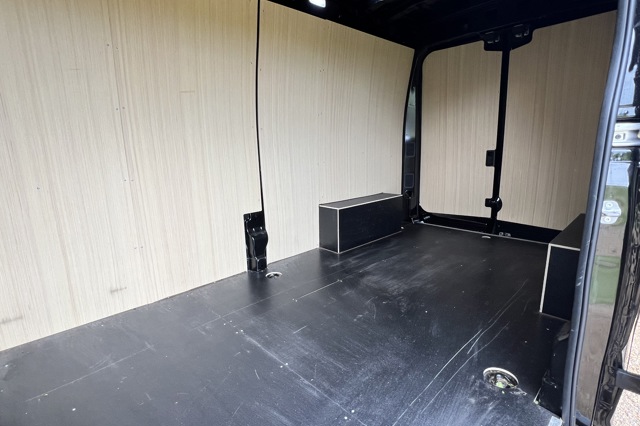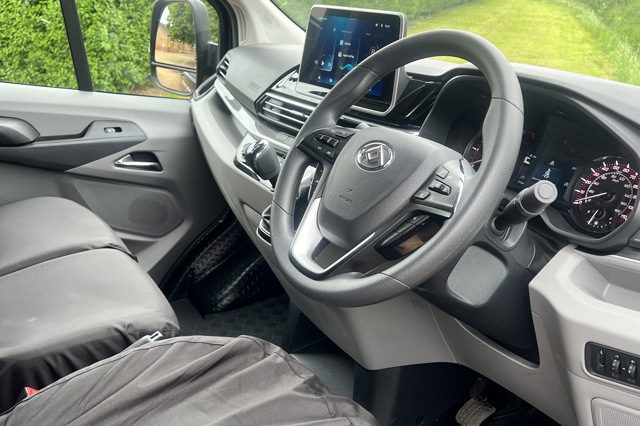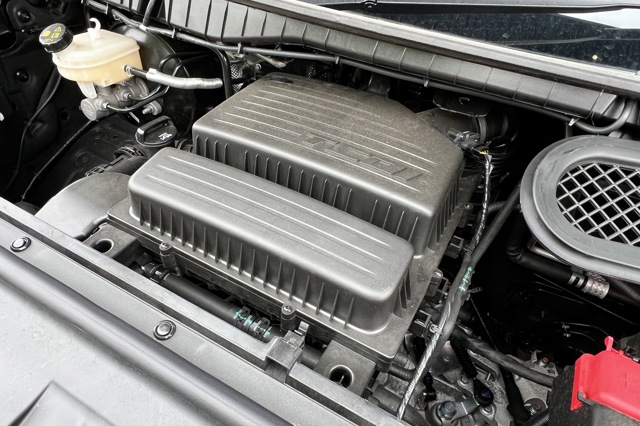Maxus Deliver 9 Review 2026
Maxus Deliver 9 At A Glance
Although its main focus is growing its share of the electric van market, Maxus isn’t shy when it comes to taking on the big boys – and they don’t get much bigger than the Maxus Deliver 9. But is the Chinese-made large van any good? Read our Maxus Deliver 9 review for the full verdict.
The Maxus Deliver 9 was the first new van to be introduced by Maxus following its rebrand from LDV in 2022 and is an obvious rival to the likes of the Citroen Relay, Renault Master and Mercedes-Benz Sprinter, but at a much more accessible price level.
Indeed, its primary objective is to ensnare customers who might normally consider a used example of the above, as the brand is served by a network of largely independent, local dealerships and targeted squarely at SMEs and sole traders rather than big fleets.
The lower volumes do mean a bit less choice than with rivals, though, and the Maxus Deliver 9 only comes with one engine choice - a 2.0-litre common rail turbo diesel unit with 163PS and a six-speed manual transmission.
There are two body lengths and roof heights and a choice of front or rear-wheel-drive in either, with load volumes ranging from just under 11 cubic metres to 12.9 cubic metres depending on configuration. Payload varies between 1140kg and 1240kg and there’s a maximum towing weight of 2500kg.
Styling-wise, it’s quite generic in its appearance but far from outdated, with a bold front grille, full-LED headlamps, LED daytime running lights and a deep windscreen.
As well as the standard panel van, Maxus offers several in-house variants of the Deliver 9 including six-seater crew cab, chassis cab and minibus, while there are also approved conversions. It may be a cheaper option, but the Maxus Deliver 9 is still a fairly serious contender when it comes to meeting the needs of customers. That need is further met by a five-year/125,000-mile warranty with five years’ roadside assistance cover included.
Driving the Maxus Deliver 9
There’s only one engine and gearbox option in the Maxus Deliver 9 – a 163PS 2.0-litre diesel with a six-speed manual transmission.
It’s capable enough though the engine is quite gruff and noisy – there’s certainly more pronounced engine noise here than in the Maxus Deliver 9’s more premium rivals, but it’s by no means horrendous or overly intrusive.
The unit pulls well from low down in the rev range but the gearing is fairly short meaning you have to work the transmission quite a bit in busy traffic, but once on the move refinement shows a measurable improvement and the van pulls well – there’s 375Nm of torque on offer and it takes motorway cruising and inclines in its stride.
Visibility is good and the Maxus Deliver 9 is surprisingly easy to manoeuvre, the electric power steering feeling very light around town but quite balanced and stable at speed.
Unladen, the rear end moves around a fair bit over bumpy roads, but it’s well-damped and surprisingly refined, with an assured feel to its handling.
There are some areas, then, where the Maxus Deliver 9 doesn’t quite match the standards of other large vans but it’s not lagging so far behind that you should discount it – for the price you pay, it’s a competent van that’s ideal for those who need a large LCV but don’t want to spend a huge outlay, yet still have the benefit of a long warranty and a new vehicle. It’s far from the leader of the class, but it’s not so far behind that you should discount it – if this is a sign of things to come from Maxus, then it’s definitely a brand to watch.
Maxus Deliver 9 interior
Starting at the business end, the Maxus Deliver 9 isn’t offered in as many configurations as its European rivals but in both high and low roof layouts it’s still a spacious van – ideal for customers who need a large van but don’t have any particularly special requirements. In other words, most of the market.
The load bay is accessible and functional – the twin rear doors have a maximum width of 1570mm to load through with 1366mm between the wheel arches, and the side loading door is 1269mm wide allowing for a Euro pallet to be loaded from the side.
The cargo area features LED lighting and a total of eight tie-down points – fewer than most rivals.
Up front, the cab is quite smart and well-equipped with a touchscreen infotainment system and smartphone-mirroring, but look more closely and some of the trim is rough and cheaply finished, though it all feels durable enough.
Safety kit is impressive for the price with surround view monitoring, autonomous emergency braking and lane change assist as standard, while there are also plenty of premium features you wouldn’t always expect in a van at this price level such as cruise control, air conditioning, 16-inch alloys, rear parking sensors and a reversing camera, although the latter gives a strangely concave image that makes judging tight spaces quite difficult.









 Great value, substantial load volume, functional and practical
Great value, substantial load volume, functional and practical
 Limited model range, engine quite harsh under load
Limited model range, engine quite harsh under load